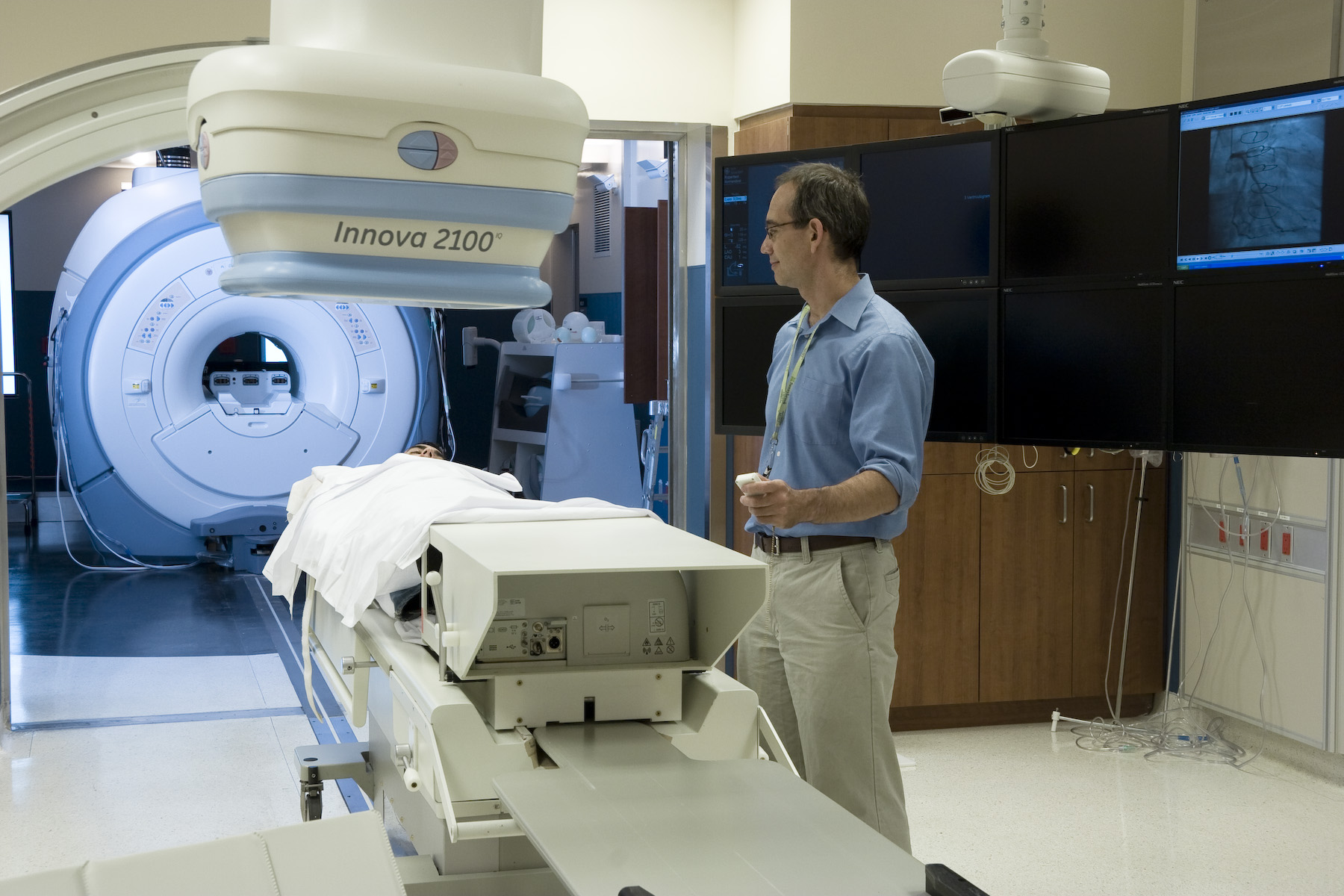Researchers Write Image-Guidance Software for Interventional Cardiology
By Jim Oldfield
Researchers at Sunnybrook Research Institute (SRI) have developed visualization software for real-time magnetic resonance (MR) imaging guidance of cardiac interventions. The program could help make MR an alternative to X-ray fluoroscopy, the current standard for guiding cardiac interventions.
Dr. Perry Radau, the technical director of the Imaging Research Centre for Cardiac Intervention (IRCCI), presented the software during the 2010 Imaging Network Ontario symposium at the University of Toronto on February 2.
Called Vurtigo, the software has a rapid image-processing speed that allows researchers to take advantage of new MR image-acquisition rates. Over the past decade, the speed of MR imaging has improved dramatically, enabling guidance of procedures such as catheterizations to repair blocked arteries.
A research group led by Dr. Walter Block at the University of Wisconsin is already adopting Vurtigo into their studies, and Dr. Graham Wright's research group at SRI is using the software to develop MR-guided cardiac electrophysiology and revascularization procedures. "The capacity to visualize cardiovascular anatomy and interventional devices together interactively in 3-D with the Vurtigo software is central to the development of new methods for minimally invasive image-guided interventions," says Wright, the director of the Schulich Heart Research Program at SRI.
Magnetic resonance offers important advantages over X-ray fluoroscopy. With MR, researchers get better visualization of soft tissue that is ischemic (lacking blood supply) or infarcted (dead) without using image-enhancing dyes or radiation—two concerns associated with X-ray fluoroscopy. "Without question, there's a lot more potential with MR," says Radau. “It has some drawbacks with speed, but those aren't hard limits. Eventually we'll get much closer to X-ray in terms of speed and resolution, and that's why MR has such a bright future."
To achieve better speed with the software, Radau and Stefan Pintilie, a software engineer supervised by Radau, wrote Vurtigo in C++—a computer language that is faster than Python, the language of an earlier incarnation of the software. Vurtigo has cross-platform compatibility, meaning it works in Windows, Linux and Mac operating systems, and because C++ is compatible with several tools favoured by programmers, it offers more flexibility for developers to build in additional functionality.
Moreover, Vurtigo is "open source," enabling anyone to access its code for free—and to customize or improve it. Many developers put restrictive licences or patents on their software in hopes of one day commercializing it, thereby preventing other researchers from using it. Radau is aware of only two programs with Vurtigo's functionality: one is protected by a U.S. researcher; the other was developed by Siemens and doesn't work with Sunnybrook's General Electric scanners. "We feel that because we're publicly funded we should try to give back to the whole community, not just keep it in-house and use it for our own research," says Radau.
The long-term goal for Radau, Wright and other MR researchers in the IRCCI is to translate basic discoveries in image processing and imaging physics to MR-guided interventions in patients. Right now, their work is preclinical. But several therapies will soon be ready for trials in humans, including a treatment to regenerate damaged heart tissue with stem cells. Says Radau, "We want to make the IRCCI a premier cardiac interventional MR facility, and I hope this software will help us do that."
The Ministry of Research and Innovation supported the development of Vurtigo through an Ontario Research Fund grant led by Wright. The IRCCI is funded by the Canada Foundation for Innovation and the Ministry of Research and Innovation.



